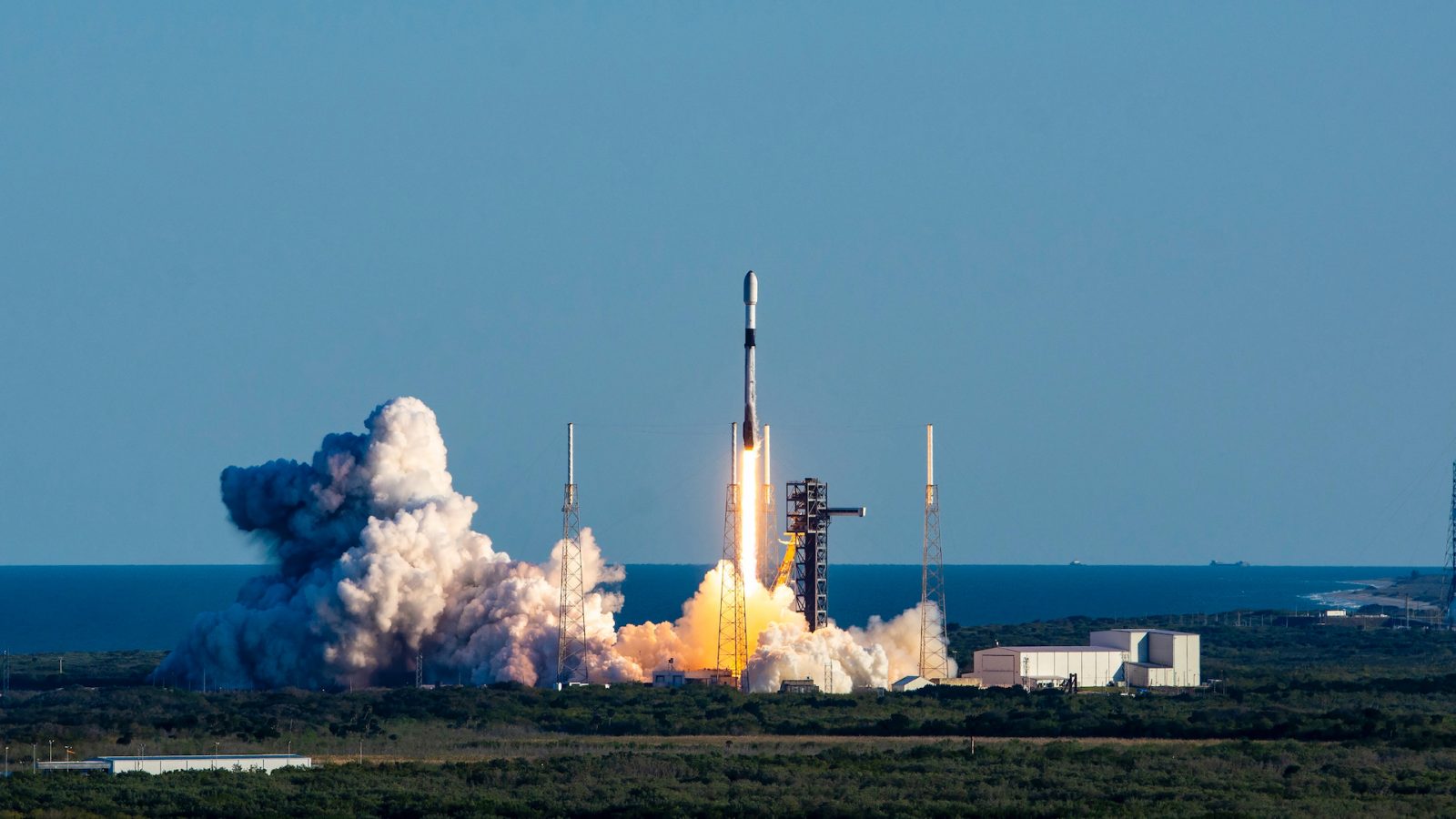
SpaceX hit another reusability milestone with a Falcon 9 booster launching and landing for a 25th time over the weekend. Launching 21 Starlink V2 mini satellites, the mission continues SpaceX’s goal to build out its Starlink constellation and its mission to push reusable rockets to their limits.
It wasn’t that long ago that we were talking about whether or not a SpaceX booster would make it five missions and would be shocked if it could do 10. Currently, 11 out of the company’s 18 active Falcon boosters have flown at least ten times.
I think the more shocking statement in that sentence wasn’t that over 60% of SpaceX’s boosters have flown double-digit amounts of times, but that they can launch over 100 times with only 18 boosters. Now that’s mind-blowing.
On Friday afternoon, SpaceX launched one of those 18 boosters with a brand-new second stage, reused fairings, and 21 shiny new Starlink V2 mini satellites. Of those, 13 were capable of direct-to-cell technology.
While Starlink launches haven’t been top of our lists for wow factor in a while, and truly this mission was just as routine as the others, Starlink Group 12-12 was able to push SpaceX just another launch further in its reusable goal.
B1067, the booster on this flight, first lifted off for SpaceX back in June of 2021 with the CRS-22 mission for NASA. It then went on to fly another CRS mission, Crew-3 and Crew-4, and seven payloads for nations and companies from around the world. The other 15 missions consisted of Starlink, a lot of Starlink satellites.
Starlink’s takeover of the bulk of SpaceX’s launches could soon move to Starship. This could also lead to the end of major milestones for Falcon 9 boosters like B1067.
On Starship Flight 7, SpaceX will launch ten dummy Starlink satellites inside its payload fairing. While not functional and suborbital, next up on SpaceX’s 2025 bucket list is getting Starship orbital. And while the current satellites are dummies, you can’t launch uncontrollable satellites into orbit without causing some massive issues for yourself with regulators, so they would need thrusters, avionics, and communications. At that point, you might as well launch actual Starlink satellites into orbit.
Elon Musk has begun talking about third-generation Starlink satellites, a likely iterative design that increases performance and makes Starlink just that much better. Depending on when they’re ready, these could fly on an early orbital mission if SpaceX is feeling daring (which they always are).
That would open the door to always launching a batch of Starlink satellites on orbital test flights of Starship. With Starship having a much larger payload bay and, by that point, hopefully fully reusable, the cost to SpaceX would be much lower. Gwynne Shotwell, SpaceX COO, has already stated the plan is to move Starlink over to Starship and then, in the next decade, sunset the Falcon program as it expects everyone would rather fly on Starship than Falcon.
So the question is, what will be the highest flown Falcon booster? 30? 35? Maybe even 40? Starship boosters and ships will easily hit hundreds if SpaceX is correct in what it’s building.
FTC: We use income earning auto affiliate links. More.




Comments